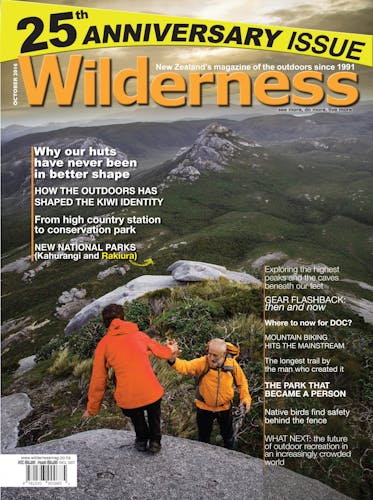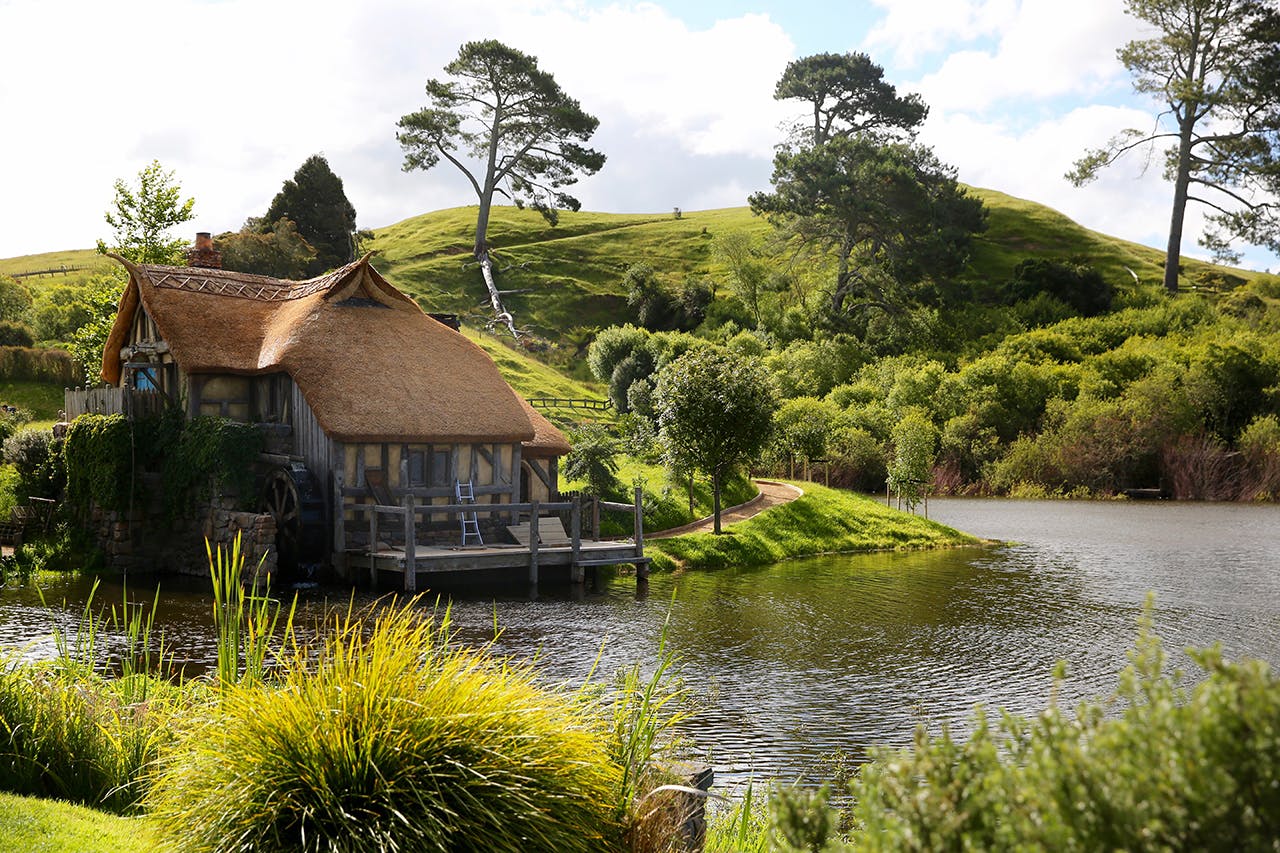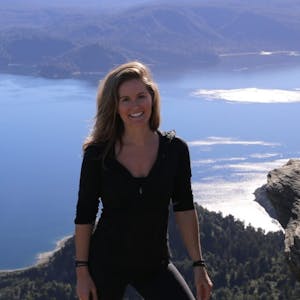Two hugely successful film trilogies have changed how New Zealanders identify with themselves and the outdoors.
By Meghan Walker
What was New Zealand before it was Middle-earth?
Back in the early 1990s, when Wilderness magazine first found its place on the shelves, just under a million visitors came to New Zealand each year. Now, that number has more than tripled, and Tourism New Zealand expects over four million annual visitors within the next few years.
Peter Jackson’s Lord of the Rings and Hobbit trilogies have had an unprecedented impact on the tourism industry. For 15 years, Tourism New Zealand has promoted New Zealand as Middle-earth, a campaign that went hand-in-hand with the 100% Pure New Zealand marketing strategy to boost visitor numbers.
The campaign has worked wonders.
Tourism New Zealand reports that one in five US visitors say the trilogies were a factor in their decision to visit the country, and 12 per cent of overall tourists surveyed said they came to see Middle-earth.
Never before has a film series transformed a country’s identity quite like Jackson’s have, according to Dr. Alfio Leotta from Victoria University.
“Many films are released around the world every year, but not many have a significant tourist spinoff, or such a profound impact on the places where the films were made,” Leotta says.
Leotta is a film tourism researcher; in 2011, his book Touring the Screen: Tourism and NZ Film Geographies was published, which looks at how the tourism industry helped make New Zealand a top travel destination through the use of film – Jackson’s films, to be precise.
“You cannot pinpoint one factor to explain the popularity of Lord of the Rings or Hobbit tourism. It’s a complex interplay of factors, the most obvious of which is the spectacular landscape,” Leotta explains. “The landscape and space in the films often play an active role, to the extent that landscape becomes an active character in the story. Sometimes the landscape plays a positive role, sometimes it presents an obstacle.”
Iconic settings of Lord of the Rings – Hobbiton (Matamata), Mordor (Tongariro), Rivendell (Kaitoke) – have become tourist hotspots, with visitors eager to experience the real Middle-earth.
And further, because the places are recognisable and correspond to actual locations, tourists are more likely to want to visit those areas.
Another reason the films make people want to visit New Zealand is tourists’ identification with the hobbits’ journeys. Leotta says that the trilogies’ stories of epic travels across the land inspires tourists to take up their own journey to Middle-earth.
“In both trilogies, both Frodo and Bilbo have to leave the familiar space of home to embark on this journey across Middle-earth.” Leotta also points out that Frodo and Bilbo are the most ordinary characters in both trilogies. With no particular powers, they are closest to the ordinary film-viewer. “The films encourage you to identify with the hobbits, who are the quintessential travelers, if not tourists.
“You see this fantastic universe of Middle-earth through the eyes of characters who have never seen these places before. Viewers get to identify with them as they travel.”
Even though tourists who come for the Middle-earth experience might be channeling their inner hobbit, Federated Mountain Clubs president Peter Wilson actually believes the average tourists these days aren’t as intrepid as they once were.
“Tourism used to be much more adventurous,” Wilson says. The average tourist has become softer, in his opinion. “If you look at some of the very early tourism ventures in New Zealand, they were what would be described as incredibly hard six- to eight-day trips now.”
In addition to the sheer increase in the number of tourists, Wilson said Middle-earth journeying is more like a stroll through Hollywood.
“Now, when tourists look at the New Zealand landscape, they are looking for the scenes in those movies, and that’s driving their patterns of recreation in the backcountry. They’re basically going to filming sights.”
So the question remains: what was New Zealand before it was Middle-earth?
“There’s a long history of New Zealand literature about our relationship with the landscape,” says Wilson. “The films have redefined that.”
Wilson says that while the films have been positive for the tourism industry, they’ve actually redefined Kiwis’ sense of self-identity and understanding of the land in a detrimental way. “We used to describe our landscape through deeper terms and deeper meaning. Now we’ve actually cheapened it by describing ourselves through Lord of the Rings.”
Leotta shares that view of the New Zealand identity shift, and said that while it’s good for certain sectors of the economy, it’s potentially dangerous for a nation to promote itself on the back of a successful film series.
“People now associate New Zealand as Middle-earth, when New Zealand is more than that.
“What’s going to happen in the future? We know there’s not going to be any other Tolkien adaptations, so what’s going to happen to Hobbit tourism? Is it going to fade out? The interest in film locations – is it going to continue? It’s hard to say.”
The question is, Leotta poses, is it worth continuing to invest in the association between New Zealand and Middle-earth? He points out that now New Zealand is becoming the film set for yet another major film series; James Cameron’s Avatar.
“Is this going to work well with New Zealand’s image as Middle-earth? Or is it going to lead to contradictions or confusion?”
Wilson sees it as a problem of misguided promotion.
“The problem is that Kiwis have come to view their landscape through an economic or brand lens, rather than seeing it for what it is and understanding its history,” he says. “We’ve taken economic concepts and applied them to the land. That in turn squeezes out other meanings, our history, Te Ao Maori (the Maori world).”
The lasting impacts of tourism on the conservation estate is an area for concern for environmental groups. The heavily promoted Great Walks are at capacity; DOC hut bookings for the Milford Track January 2017, sold out within three hours of going on sale. The question now on the minds of the Department of Conservation and Tourism New Zealand is where to put all the additional tourists. Furthermore, how do Kiwis co-recreate with international tourists?
Another example of tourist overload is the Tongariro Crossing, with peaks of 3000 people on the track in one day. DOC’s director general Lou Sanson says they’re spending about $50,000 just on traffic control as people come out from the end of the track.
“Sometimes we become the victim of our own success,” Sanson said at the recent Environmental Defense Society’s Wild Places conference.
And that enduring effort to attract as many tourists as possible is counterproductive to the very constitution of the department, argues Forest & Bird’s advocacy manager Kevin Hackwell. He points out that DOC’s primary function is to protect the conservation estate, and later provide access to tourism. Hackwell sees the scales as being tipped toward tourism concerns first, pointing to the department’s decision to allow an increase of 10 to 80 helicopter landings per day on the Ngapunatoru Ice Plateau in order to satisfy tourist demands.
“Government’s response is ‘great, here come the tourists, listen to the cash registers ring,’” Hackwell says. He doesn’t believe DOC should be as concerned with tourism as it is.
“The department has a lot of pressure on it, but actually by law, it has to look primarily at its conservation requirements and responsibilities first, and then to manage the tourism inasmuch as it doesn’t interfere with that.”
Wilson shares that concern, and adds that it’s an issue of supply; he thinks there’s too much marketing, with too little concern for how to handle the growing surge of tourists. He thinks the government’s national promotion should be scaled back, with redirected energy channelled into the tourism-management infrastructure.
“It seems to be the extension of Kiwis’ desire for international validation,” Wilson says of the tireless Middle-earth promotion.
“We aren’t quite yet secure enough as a nation to be happy in our own story and history, so we seem to need to hide behind brands and rationalise it economically. I’d say, and FMC would say, we don’t need this. Let the land speak for itself, without brands.”







